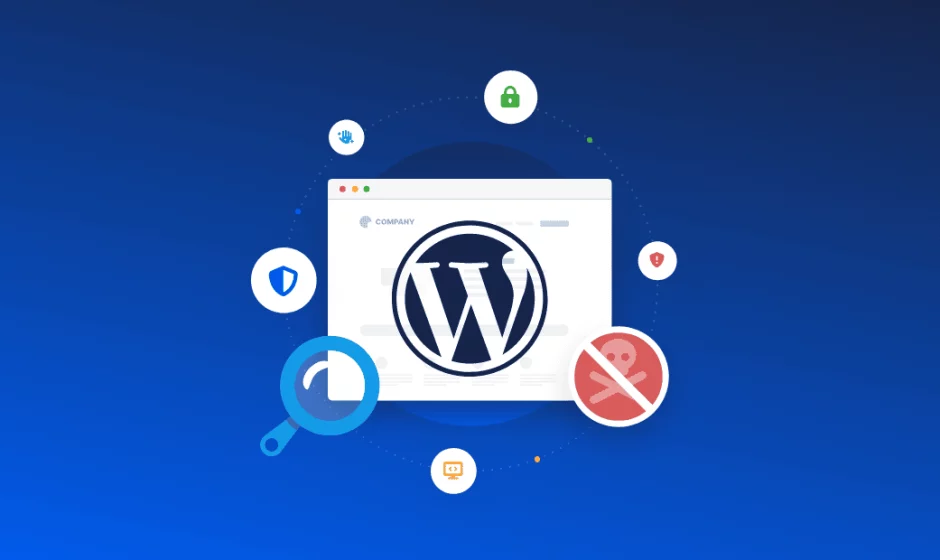If you’ve ever encountered the dreadful scenario of a hacked WordPress site, don’t hit the panic button just yet. In this article, we’ll walk you through five crucial steps to regain control and clean up your site, providing a clear and actionable solution to this common problem. Whether you’re a seasoned developer with an eye for code or a busy business owner focused on your company’s success, we’ve got you covered. Neglecting to take action on these steps could mean prolonged downtime, loss of data, and potential damage to your online reputation. So, let’s dive into these practical solutions and secure your WordPress site today!
1. Change All Your Passwords
The first step in mitigating a hack is to secure your access points. Start by changing every password associated with your website:
- WordPress login credentials
- Hosting account password
- cPanel login details
- FTP credentials
This immediate action will cut off the hacker’s access and prevent further damage.
2. Check for Backups
Before diving into the cleanup process, check if you have a recent backup of your website. Backups are a lifesaver in situations like this. If you have one, you can restore your site to a clean state without losing your valuable content and data.
3. Use Wordfence Security
Wordfence, a robust security plugin, can be your knight in shining armor. It empowers you to identify and compare the hacked files on your site with the original WordPress core files and themes/plugins from the repository. This step will reveal what has changed and give you the option to repair or delete compromised files with a single click.
4. Seek Professional Help
If you’re a busy business owner with limited time, consider enlisting the services of experts. Wordfence offers a solution called “Wordfence Care.” This premium service allows experienced teams to take care of the problem for you. Simply sign up and request site cleaning assistance, and they’ll get to work.
For those with mission-critical websites that can’t afford downtime, “Wordfence Response” is the way to go. Their 24-hour incident response team will start resolving the issue within an hour, ensuring your site is back in shape within 24 hours.
5. Do It Yourself
If the budget is tight or you prefer a hands-on approach, don’t worry; you can tackle the problem yourself with Wordfence’s free version, which is equipped with powerful tools for cleaning your hacked site. This cost-effective option empowers you to take matters into your own hands, making it an excellent choice for resource-conscious website owners.
Wordfence’s free version not only offers robust security features but also provides comprehensive malware scanning and cleaning capabilities. This means you can initiate the recovery process without incurring additional expenses. However, while the free version is a valuable resource, keep in mind that the premium version offers even more advanced features and real-time protection for ongoing website security.
By taking advantage of Wordfence’s free version, you’re not only addressing the immediate hack but also gaining insights into strengthening your site’s defenses to prevent future attacks. It’s a proactive and cost-effective solution to ensure the longevity and security of your online presence.
Before you embark on the cleanup, ensure you’ve genuinely been hacked. The telltale signs include:
- Spammy content in your site header or footer
- Unrecognized pages or malicious content in Google search results
- Reports of user redirection to spammy websites
- Notifications from your hosting provider about malicious activities
- Wordfence’s alerts can help you detect these issues, so pay close attention to them.
When you’ve confirmed a hack on your website, it’s essential to act swiftly. Start by using FTP (File Transfer Protocol) to back up your entire site. This step is critical because it serves as a safety net to prevent potential data loss and to ensure you have a clean copy of your website’s content and files.
FTP is a reliable method for accessing your web server’s files and transferring them to your local computer. By using an FTP client, you can securely download all your website data, preserving it in its current state before the hack occurred.
One key reason to use FTP for this backup is that some hosting providers may react to a detected hack by deleting your site. Without a backup, you risk losing all the hard work and content you’ve invested in your website. FTP allows you to take control of your site’s data and safeguard it.
So, when facing a hacked site, don’t delay – connect through FTP and back up your entire site promptly. This precaution ensures that you have a secure copy of your site’s contents, minimizing the impact of the hack and setting the stage for a successful recovery.
A few additional tips:
You can usually delete files in the wp-content/plugins/ directory without causing site issues. WordPress will detect and disable deleted plugins.
If you have multiple theme directories, keep the active one and remove the rest.
Be cautious of new files in the wp-admin and wp-includes directories, as they may be malicious.
Avoid leaving old WordPress installations and backups accessible, as they could be a gateway for attackers.
Remember, cleaning a hacked site can be a daunting challenge, but fear not, because with determination and the right approach, you can not only recover your website’s integrity but also fortify it against potential future attacks. It’s a journey toward reclaiming the digital space you’ve worked so hard to build and maintain.
The road to recovery starts with identifying and isolating the breach, so you can begin the restoration process with confidence. This proactive step is your shield against the potential risks of data loss, reputation damage, and customer trust erosion if you don’t act promptly.
Once you’ve followed these essential steps, your website will not only be back on track but will also stand as a resilient fortress against malicious threats. By taking action, you’re not just protecting your digital assets; you’re ensuring the continued success of your online presence.
So, don’t hesitate; take these steps with resolve and secure your website’s future. Your dedication to its well-being will be rewarded with a safer and more robust online platform. You’ve got this, and your website will thank you for it!



